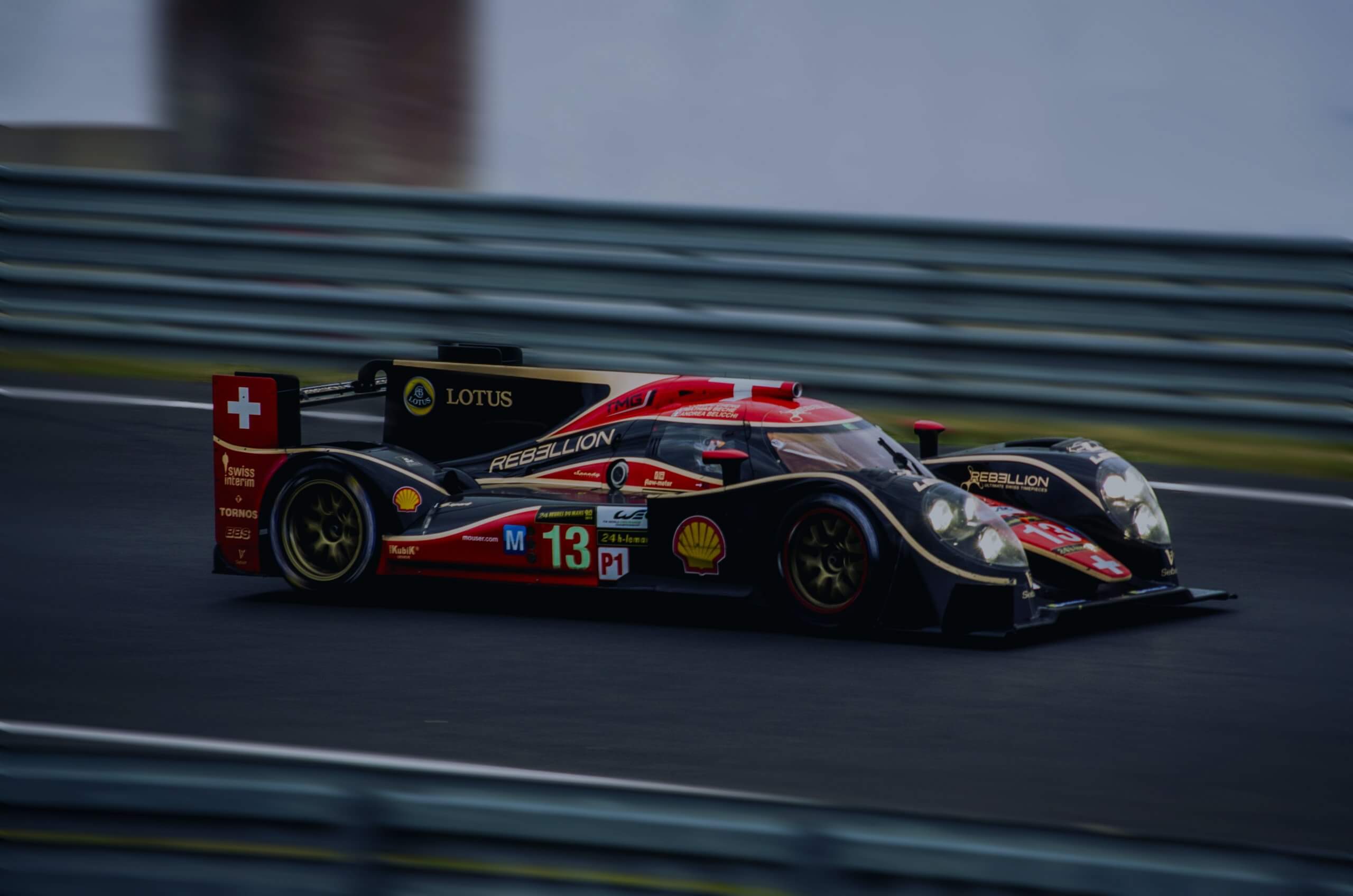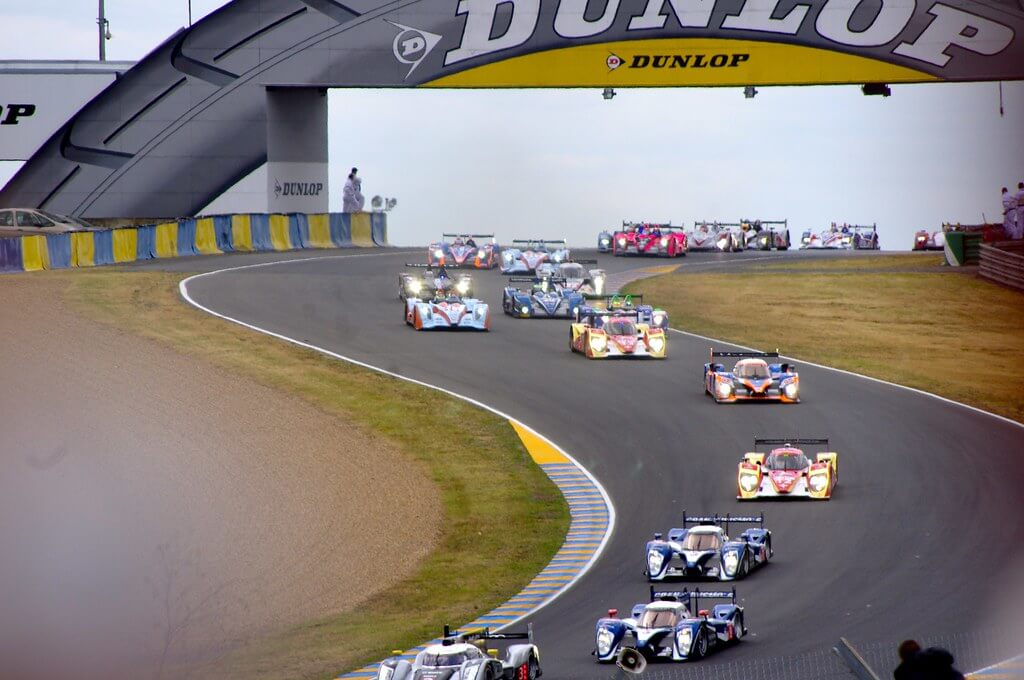The Le Mans 24 Hours race is the most gruelling endurance test in motorsport.
Only the toughest cars and drivers survive the race - let alone emerge victorious.
Find out more about this iconic race including:
- A brief history of the Le Mans 24 Hours
- Who competes in the race
- The most famous drivers to win the race
- How does the Le Mans 24 Hours work?
Page Contents
- When Is the Race Held in 2024?
- What Time Does Le Mans Start?
- A (Brief) History of Le Mans 24 Hours
- Who are the Most Famous Race Winners?
- Who Competes in the 24 Hours of Le Mans?
- How Does Le Mans Work?
- Where Is the Race Held?
- How Many Miles is the 24 Hours of Le Mans?
- Do Drivers Sleep During the Race?
- What Is the Le Mans Lap Record?
- What's Different About Le Mans in 2024?
When Is the Race Held in 2024?
The 92nd 24 Hours of Le Mans will take place from the 12th to the 16th of June 2024.
What Time Does Le Mans Start?
From its inception - until 2008 - the race began at 16:00 local time on a Saturday.
From this point on from 2009 to 2019 - and in 2022 and in 2025 to come - the race started at 15:00 local time.
The race has returned to its original start time of 16:00 in 2024, as it did in 2021 and 2023.
A (Brief) History of Le Mans 24 Hours
The Le Mans 24 Hours race is the oldest active endurance race in motorsport.
It was first staged in 1923 and the early years were dominated by French, British and Italian drivers.
While there was a 10-year hiatus between 1939 and 1948 because of WW2, when the race resumed in 1949, interest was greater than ever.
More and more manufacturers got involved and used the race as a breeding ground for automotive innovation.
The Le Mans 24 Hours quickly became the pinnacle of motorsports as a result.
Unfortunately, as the cars got faster and faster, horrific accidents became more common.
Pierre Levegh's crash in 1955 led to the widespread introduction of safety measures.
In fact, the 84 deaths suffered in this crash halted professional motorsport in many countries.
However, the safety standards could not keep up with the development of the cars.
Drivers could reach speeds of 200mph down the Mulsanne Straight as early as the 1960s, which is when the racing really started to heat up.

The '60s also saw the greatest rivalry develop between Ford and Ferrari, a story immortalised in the 2019 film 'Le Mans '66'.
Henry Ford II tried to buy Ferrari in 1963, which Enzo Ferrari rejected and sparked a decade-long feud.
Ford endeavoured to create a race car to end Ferrari's dominance at Le Mans, which they finally managed when Carroll Shelby and Ken Miles built the iconic Ford GT40 Mk II.
This dominated the race between 1966 and 1969, winning all four in succession.
This included a 1-2-3 for Ford in 1966 - the same year that no Ferrari finished the race.
Eventually, the race organisers were forced to radically change the track to slow drivers down.
The course has changed many times, with drivers racing the current configuration for the first time in 2018.
The most drastic change was in 1990 when two chicanes were introduced to the Mulsanne Straight.
This stopped drivers from reaching 250mph down this 5km straight.
However, to this day, drivers regularly hit 200mph several times during a lap.
In the 2000s and 2010s, the focus of the race switched towards exceptional endurance prototypes.
Audi was dominant in this period, with 14 victories between 2000 and 2014.
From 2014 onwards, the LMP1 class focused on hybrid vehicles and Porsche became the new dominant force with their 919 Hybrid.
In the last three races, that baton has passed to Toyota Racing, who won in 2018, 2019 and 2020.
New regulations came into force in 2021 that created the 'Hypercar' class, with further classes coming into force in 2022 and 2023.
This encouraged more big manufacturers to race at the Le Mans 24 Hours and standardised European and American endurance regulations.
Motorsport Triple Crown
The 24 Hours of Le Mans forms one part of the unofficial Triple Crown of Motorsport.
The other two events are the Indianapolis 500 and the Monaco Grand Prix.
It is the most prestigious crown a racing driver can earn, especially as the three races are entirely different disciplines.
To win the Triple Crown, a driver must master single-seater F1 driving, long-distance endurance racing and high-speed 'Indy Car Racing' (which is basically a mix of the other two).
Who are the Most Famous Race Winners?
There have been plenty of famous winners, many of whom are or were also successful Formula 1 drivers.
The most notable include:
- Fernando Alonso (2018, 2019)
- Nico Hülkenburg (2015)
- Martin Brundle (1990)
- Graham Hill (1972)
- Bruce McLaren (1966)
- Carroll Shelby (1959)
As of 2024 so far, Graham Hill is the only driver to complete the Motorsport Triple Crown (he won the Indianapolis 500 in 1966 and Monaco Grand Prix in 1963 - 65, 1968 - 69).
Among current drivers, Fernando Alonso needs to win the Indianapolis 500 to complete the Triple Crown while Juan Pablo Montoya needs to win the 24 Hours of Le Mans.
Who Competes in the 24 Hours of Le Mans?
Every year there are roughly 60 teams, spread across the 4 classes.
There are plenty of private ventures, but some of the most notable Le Mans competitors for 2024 include:
- Cadillac Racing (Hypercar)
- Porsche Penske Motorsport (Hypercar)
- Toyota Gazoo Racing (Hypercar)
- Isotta Fraschini (Hypercar)
- Action Express Racing (Hypercar)
There have been plenty of previously successful manufacturers racing under their own name including:
- Porsche (14 wins; 1970, 1976-77, 1979, 1981-83, 1986-87, 1994, 1998, 2015 - 2017)
- Audi (14 wins; 2000-02, 2004, 2006-08, 2010 - 14)
- Peugeot (3 wins; 1992-93, 2009)
- Bentley (5 wins; 1927-30, 2003)
- Jaguar (4 wins; 1953, 1955, 1988, 1990)
- Ferrari (7 wins; 1954, 1958, 160-64)
How Does Le Mans Work?
While the concept of the Le Mans 24 Hours is simple enough - complete as many laps as possible in 24 hours - the field is split into different classes.
For the 2024 race, these are Hypercar, LMP2, LMGTE Pro, and LMGTE AM.
There is a winning car in each class, as well as an overall winner regardless of class, determined by "greatest distance".
If two cars finish on the same lap, the finishing order is determined by faster overall completion time (whoever crosses the line first).
Most teams have three drivers who take it in turns to race.
Teams must nominate a "main" driver months in advance of the race and then nominate the other two drivers a few days before.
No driver can spend more than 14 hours behind the wheel of the car, each must drive a minimum of 6 hours and none can drive more than 4 hours out of any 6 hour period.
Drivers are split into 4 categories: Platinum, Gold, Silver and Bronze.
Platinum and Gold are made up of professional drivers and Silver and Bronze are amateurs.
Rookie drivers or drivers who have not raced at Le Mans in the last 5 years must complete a session on the simulator and drive at least 10 laps on the Test Day to prove themselves competent.

The race starts with a rolling start, with the fastest vehicles leading the way.
This is determined by a qualifying period.
While cars can miss sections of the race to repair reliability issues or crash damage, a vehicle must finish the last lap and have covered 70% of the total distance covered by the overall winner to be classified in the race.
Le Mans is a test of reliability, so failing to cover a significant amount of distance leads to a non-classification, even if the car crosses the finish line on the last lap.
Le Mans 24 Hours is also the jewel in the World Endurance Championship's crown.
Race lengths range from 6 to 24 hours across 6 rounds to determine the ultimate endurance champion of 2024.
Where Is the Race Held?
The race is held at the Circuit 24 Hours of Le Mans, also known as the Circuit de la Sarthe.
This is just outside the town of Le Mans, France.
It combines sections of the short Bugatti Circuit as well as public roads to create a fearsome track.
Drivers also take in sections of nearby villages such as Mulsanne and Arnage.

How Many Miles is the 24 Hours of Le Mans?
Each lap is 8.467 miles (13.626 kilometres long).
There is no set distance or number of laps for drivers to complete - the teams just drive for 24 hours and the winner is the car that completes the most laps.
The longest distance achieved on the current circuit is a staggering 3,285.115 miles (5,286.88 kilometres).
This works out at 388 laps!
Do Drivers Sleep During the Race?
Yes, but they don't sleep much.
Rest is a luxury during such a long and grueling endurance race that the most sleep a driver can expect during the race is about 5 hours.
They can't get a full night's rest because they have to be awake and alert for their next stint behind the wheel - which could be between Midnight and 3am.
Some drivers make do with two 15-20 minute naps during the race!
What Is the Le Mans Lap Record?
There are several different lap records because there have been many track configurations and there are many different classes in the Le Mans 24 Hours race.
The fastest ever lap around the current circuit is 3:17.297, set by Mike Conway in an LMP1 Toyota TSO50 Hybrid during the 2019 race.
The lap record for the LMP2 class is 3:27.200 set by Nathanaël Berthon in an Oreca 07 during the 2018 race.
The lap record for the LM GTE class is 3:49.448 set by Jan Magnussen in a Chevrolet Corvette C7.R, also during the 2018 race.
What's Different About Le Mans in 2024?
In 2024, the hypercar class (LMH and LMDh) has had new manufacturers join, with existing teams upgrading their technology.
There have also been updates to Balance of Performance (BoP) regulations that are designed to ensure closer competition across different car types and manufacturers.
In line with global automotive trends towards reducing carbon emissions, greater emphasis has been placed on hybrid and alternative powertrains this year, too.
Likewise, there will be greater use of biofuels and synthetic fuels at the event.
Improved driver safety technology and safety features on the cars will also be in use, such as advancements in crash structures.







